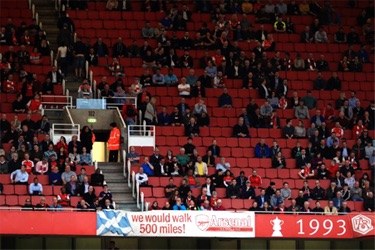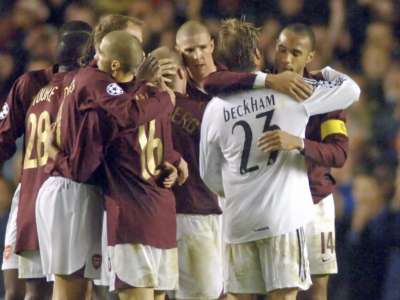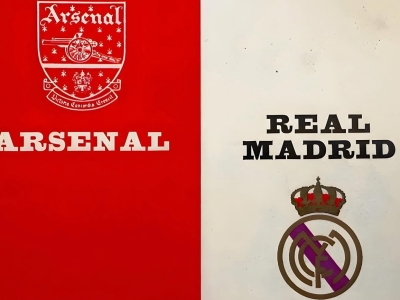There’s an old adage that no lie lasts forever and the truth will always come out in the end. That adage of course is a bit of a daft one, as how on earth can you measure the number of lies that have never been exposed? There is however a point where a lie becomes so obvious that it makes it blindingly stupid to continue peddling it and, ultimately, self-harming due to the fact that people generally lose trust in the source of the untruth in the long run. This is a fact of life which most people learn as children, however in this ‘Post-Truth’ era of the late 2010s, it seems to be something totally lost on people that run business with a turn over that runs into billions of pounds, like Premiership football clubs.
In the days since the failure of Arsenal FC to fully sell out virtually every home game around the start of this decade, the club’s ‘official’ attendance figure has since become something of a bone of contention among Arsenal fans. The gerrymandering of the attendance figures by Arsenal has been obvious over the last five to seven years or so, but alarm bells about falling attendances was always something I’d scoffed at as historically speaking demand was always exceedingly high, even throughout this period. Thanks to the brilliant ‘The Arsenal History’ site, a quick perusal over Arsenal’s attendance figures for 1985/86 tells you that most of Arsenal’s attendances since 2006 have been nothing much to worry about (45,109 v Spurs on New Year’s Day the highest attendance of the season within a 60,000 stadium!). That was however until last Thursday.
When you look for instance at Arsenal’s attendance figure for Leicester City’s visit to Highbury on the last day of August 1985 at 18,207, it’s difficult to image any game at the E******s Stadium having only filled just under a third of the stadium. Until of course, BATE Borisov turned up in N5. The official attendance figure however reads "54,648" – having attended that game there was no way on earth that ground was nine-tenths full that evening. Aside from Arsenal FC being stupidly economical with the truth however, what also must be asked is exactly why Arsenal’s lowest attendance this side of the millennium has occurred. And that isn’t quite as easy a question to answer as you might think.
Some might put it down to the general performance of the team, but are Arsenal really playing so badly as to attract a crowd that barely quarter fills a stadium they previously had little trouble filling out? Even after losing 2-8 to Man United back in 2011, a full house of 60,087 turned out to see them play Swansea two weeks later. The nearest ‘Mickey Mouse’ fixture to that calamity was Shrewsbury in the League Cup which brought an official attendance of 46,539 and having attended that fixture too I can personally testify that more people turned out that night than to watch the BATE Borisov game. Some might point to the cost, but the admission fee for the numerous empty seats on the lower tier was just £15.50, which compared to most sporting events is barely anything.
Some might point to the weather, but football is after all a winter game. Huge swathes of the season are played out in the cold and most games have previously seen a stadium at least 85% full. Some might point to the quality of the tournament, opposition and the second string line up, but back in 2009, the home leg of the FA Youth Cup Final attracted a crowd of 33,000. The Quarter Final tie away at Spurs for that campaign saw 19,084 head to White Hart Lane on a Thursday night, so the choice of evening to play the game isn’t necessarily a factor either. Maybe there’s one truth behind this that might just be too unpalatable for the industry to consider – maybe football’s bubble is simply beginning to burst?
After all, this isn’t necessarily a problem that just effects Arsenal alone. Tottenham Hotspur’s average attendance at a stadium which holds a capacity of 90,000 people is 72,229. The visit of Chelsea brought out a crowd of 73,587 and Liverpool brought 80,827. Few people thought that the top flight record of 84,569 for Stoke City’s visit to Maine Road to face Man City in 1934 would have still remained intact by this point of the season, but it still does. At the other end of the scale, Spurs have seen an attendance low of 23,826 against Barnsley. Even a Cup tie with West Ham for a tenner brought out just 36,168. And this is apparently the most ‘successful’ and ‘threatening to achieve’ Spurs side we’ve seen in a generation!
One of the answers to Arsenal’s low attendance on Thursday was that the tie was shown on TV. Arsenal’s Europa League fixtures have been averaging around half a million on BT Sport 2, which is roughly what football matches attain on Satellite TV these days anyway. There’s evidence however that football’s Satellite TV ratings have been dropping over the last few years also, as at the start of the 2010s Sky could once rely on an audience of around 1.2 million viewers. Despite paying out record sums for the rights back in 2015, both Sky and BT Sport have seen viewing numbers falling. Much has been made of British football’s huge overseas TV audience, which admittedly is considerable, however ratings for NBC’s coverage of the Premiership, shown coast to coast across America, also fell last season.
One thing many people have forgotten is just how far football came over the last twenty five years or so in terms of profile and popularity, not just globally but in a domestic sense too. At the start of the 1990s, during Arsenal’s last pre-Premiership season a crowd of 27,844 turned out to watch Arsenal play title chasing Leeds United at Highbury. As was the case back then, League games were shown on free to air terrestrial TV for anyone with a TV set to view on the ITV network. The viewing figures however only ever averaged at around seven to eight million and barely scraped ITV’s top thirty ratings for the week. Very often ITV’s ‘The Match’ languished below Harry Secombe’s ‘Highway’ from ITV’s obligatory ‘God Slot’ programming.
Football however still often dominates social media discourse and is very much still top of the trending list on Twitter at any given time. If apathy isn’t at the heart of falling ratings and attendance figures maybe its something else? For many years, people have often warned of football’s demographic time bomb, as the game’s core attendance has come from the ‘baby boomer’ generation. As many of them are entering their seventies, they’re becoming less interested in travelling to view games in the football stadium in all weathers. The generation under the age of thirty have often been priced out of the game over the years and never really had a prolonged period of football match attendance during their lifetime. It’s therefore not something the game can necessarily expect from them.
And let’s not forget that the wages and savings of millennials simply do not go as far as that of older generations. The baby boomers attended football as a ‘pocket money’ audience. Football however has spent the last twenty years or so pricing out even the ‘first time mortgage buyer’ audience. There’s also the old adage that the young are more adept at newer technology and instead of paying to watch games in the stadium or on Satellite TV, are simply streaming live games off of the internet for free. This is a threat I pointed out through the Online Gooner back in February 2015, warning of Football suffering its own Napster effect.
Remember also that the 10,000% plus price rise for showing games in pubs over the last twenty five years and the fact that most of the decade has seen pubs shutting down at a rate of knots, also means that football’s greed has also slowly killed this previously reliable route of revenue. You would think that taking all this into account - like back in 1985/86 - maybe football might be becoming something of declining interest to media conglomerates. Well, you’d be wrong.
The bidding for the broadcasting rights deal for the Premiership will be coming up over next few months and apparently Amazon, YouTube and even Facebook are interested in bidding, which could see even the £5 Billion reaped in 2015 dwarfed by comparison. With fears that football’s bubble may be about to burst any time soon, I hope it doesn’t pass by those running the game that this could easily be the most important contract they’ll ever negotiate for the future direction of the sport in this country.
*Robert Exley can be found on Twitter@robert_exley








